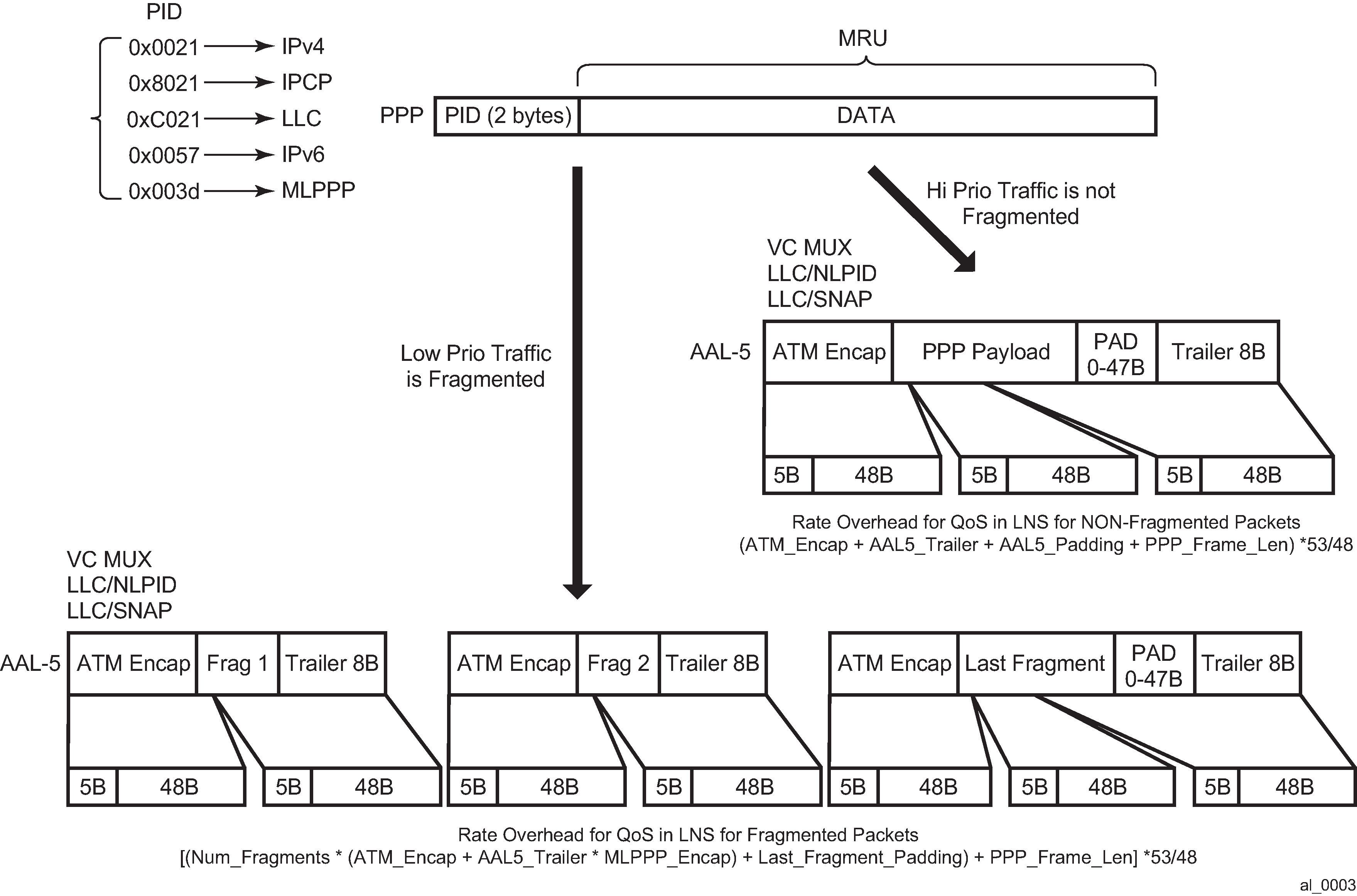By implementing MLPPPoX in LNS, the traffic treatment functions (QoS/LFI) of the last mile to the node (LNS) that is multiple hops away is transferred.
The success of this operation depends on the accuracy at which the last mile conditions in the LNS can be simulated. The assumption is that the LNS is aware of the two most important parameters of the last mile:
The last mile encapsulation — This is needed for the accurate calculation of the overhead associated of the transport medium in the last mile for traffic shaping and interleaving.
The last mile link rate — This is crucial for the creation of artificial congestion and packet delay in the LNS.
The subscriber QoS in the LNS is implemented in the carrier IOM and is performed on a per packets basis before the packet is handed over to the BB-ISA. Per packet, instead of per fragment QoS processing ensures a more efficient utilization of network resources in the downstream direction. Discarding fragments in the LNS would have detrimental effects in the RG as the RG would be unable to reconstruct a packet without all of its fragments.
High priority traffic within the bundle is classified into the high priority queue. This type of traffic is not MLPPPoX encapsulated unless its packet size exceeds the link MTU as described in MLPPPoX fragmentation, MRRU and MRU considerations. Low priority traffic is classified into a low priority queue and is always MLPPPoX encapsulated. If the high priority traffic becomes MLPPPoX encapsulated or fragmented, the MLPPPoX processing module (BB-ISA) considers it as low-priority. The assumption is that the high priority traffic is small in size and consequently MLPPPoX encapsulation or fragmentation and degradation in priority can be avoided. The aggregate rate of the MLPPPoX bundle is on-the-wire rate of the last mile as shown in Figure: Last mile encapsulation.
ATM on-the-wire overhead for non-MLPPPoX encapsulated high priority traffic includes:
ATM encapsulation (VC-MUX, LLC/NLPID, LLC/SNAP).
AAL5 trailer (8B).
AAL5 padding to 48B cell boundary (this makes the overhead dependent on the packet size).
Multiplication by 53/48 to account for the ATM cell headers.
For low priority traffic, which is always MLPPPoX encapsulated, an additional overhead related to MLPPPoX encapsulation and possibly fragmentation must be added. In other words, each fragment carries ATM+MLPPPoX overhead.

For Ethernet in the last mile, the implementation always assures that the fragment size plus the encapsulation overhead is always larger or equal to the minimum Ethernet packet length (64B).